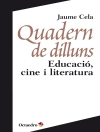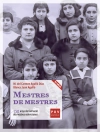This volume documents on-going research and theorising in the sub-field of mathematics education devoted to the teaching and learning of mathematical modelling and applications. Mathematical modelling provides a way of conceiving and resolving problems in people’s everyday lives as well as sophisticated new problems for society at large. Mathematical modelling and real world applications are considered as having potential for cultivating sense making in classroom settings. This book focuses on the educational perspective, researching the complexities encountered in effective teaching and learning of real world modelling and applications for sense making is only beginning. All authors of this volume are members of the International Community of Teachers of Mathematical Modelling (ICTMA), the peak research body into researching the teaching and learning of mathematical modelling at all levels of education from the early years to tertiary education as well as in the workplace.
Daftar Isi
Series Preface; Gabriele Kaiser and Gloria Stillman.- Helena Wessels – Her ‘Life Story’; Dirk Wessels.- 1. Sense-Making in Mathematical Modelling and Applications Educational Research and Practice; Gloria Stillman, Gabriele Kaiser, and Erna Lampen.- Part I Innovative Approaches in Modelling Educational Research and Teaching.- 2. Connections of Science Capital and the Teaching and Learning of Mathematical Modelling – an Introduction; Pauline Vos, Paul Hernandez-Martinez and Peter Frejd.- 3. Teachers’ Possibilities to Generate Science Capital for Modelling; Peter Frejd.- 4. Science Capital, Habitus and Mathematical Modelling Practices in the Field of University Education; Paul Hernandez-Martinez.- 5. On Science Museums, Science Capital and the Public Understanding of Mathematical Modelling; Pauline Vos.- 6. Working as a Cross-Institutional Collaborator Network to Develop Enhanced Analyses of Learners’ Models and Modelling; Corey Brady, Jeffrey A. Mc Lean, Hyunyi Jung, Aran W. Glancy and Ángeles Domínguez.- 7. Mapping Shifting Discourses in Classroom Talk Through Indexical Discourse Analysis: From the World of Mathematics to the World of Work; Stephen T. Lewis and Azita Manouchehri.- 8. Joy of Mathematical Modelling: A Forgotten Perspective?; Yuriy Rogovchenko, Olov Viirman and Stephanie Treffert-Thomas.- 9. Re-Signifying Function Concept: A Mixed Methods Study to Understand the Contributions of the Dialogic Approach of Ethnomodelling; Milton Rosa, Daniel Clark Orey and Diego Pereira de Oliveira Cortes.- Part II Research into or Evaluation of, Teaching Practice in Mathematical Modelling Education.- 10. Sense-Making with the Mathematical Modelling Process: Developing a Framework for Faculty Practice; Todd Abel, Mary Elizabeth Searcy and Tracie Mc Lemore Salinas.- 11. Mathematical Modelling with a Solution Plan – An Intervention Study about the Development of Grade 9 Students’ Modelling Competencies; Catharina Adamek.- 12. A case study of the tensions and challenges arising as an upper secondary teacher designs and implements a model development sequence on statistics; Jonas Bergman Ärlebäck.- 13. Year 6 Students’ Gradual Identification of Mathematical Models of Average Speed when Making Sense of ‘Walking’; Takashi Kawakami, Shigekazu Komeda and Akihiko Saeki.- 14. A Time-Based Measurement of the Intensity of Difficulties in the Modelling Process; Heiner Klock and Hans-Stefan Siller.- 15. Deepening and Expanding Mathematical Models of Speed in Relation to Walking: The Case of Year 8 Students; Shigekazu Komeda, Takashi Kawakami, Masafumi Kaneko and Takashi Yamaguchi.- 16. Facilitating Modelling Activities in a Grade 5 Classroom; Azita Manouchehri, Mehmet Bekdemir and Xiangquan Yao.- 17. Mathematical Modelling as a Learning Environment to Transform a Street Activity into a Sport Practice; Daniel Clark Orey, Milton Rosa and Rogério Braga Soares.- 18. Co-development of engineering technician and mathematical modelling competencies; Lidamaride Villiers and Dirk Wessels.- Part III Pedagogical Issues for Teachers and Teacher Educators Using Mathematical Modelling and Applications.- 19. Sensemaking in Modelling Tasks – What Can We Learn From Other Domains?; Piera Biccard.- 20. The Deployment of Mathematics in Areas other than Those Normally Associated with Mathematical Modelling and the Applications of Mathematics; Cyril Julie.- 21. Rising to the Challenge: Promoting Mathematical Modelling as Real-World Problem Solving; Peter Galbraith, Derek Holton and Ross Turner.- 22. Mathematics Trails and Learning Barriers; Iwan Gurjanow and Matthias Ludwig.- 23. Validating with the Use of a Dynamic Geometry Software; Corinna Hankeln.- 24. Using a Mathematical Modelling Activity to Assist Students to Make Sense of a Limit Theorem in Trigonometry; Toshikazu Ikeda and Max Stephens.- 25. Exploring Habits and Habitus of Biomedical Students with Modelling Tasks; Hanti Kotze.- 26. Metacognitive Strategies in Group Work in Mathematical Modelling Activities – the Students’ Perspective; Alexandra Krüger, Katrin Vorhölter and Gabriele Kaiser.- 27. Fostering Students´ Construction of Meaningfulness of Mathematics with Mathematical Modelling Problems; Katrin Vorhölter and Björn Schwarz.- 28. Teachers’ Perspectives on Students’ Metacognitive Strategies During Mathematical Modelling Processes – a Case Study; Lisa Wendt, Katrin Vorhölter and Gabriele Kaiser.- Part IV Assessment of Mathematical Modelling in Schools.- 29. Cognitive Diagnostic Modelling for Mathematical Modeling Assessment; Cigdem Alagoz and Celil Ekici.- 30. Occurrences of Mathematical Modelling Competencies in the Nationally-set Examination for Mathematical Literacy in South Africa; Mbulelo Bali, Cyril Julie, and Monde Mbekwa.- 31. Expectations for Challenge in Modelling and its Assessment; Jill Brown.- 32. Modelling Tasks in Central Examinations Based on the Example of Austria; Hans-Stefan Siller and Gilbert Greefrath.- Part V Applicability at Different Levels of Schooling and University.- 33. Characterising Modelling Competency in Students’ Projects: Experiences from a Natural Science Bachelor Program; Morten Blomhøj.- 34. From Royaumont to Lyon: Applications and Modelling During the Sixties; Dirk De Bock and Bert Zwaneveld.- 35. Interactive Case Practice Teaching on Mathematical Modelling Course; Xiaojun Duan, Dan Wang and Mengda Wu.- 36. Pre-service Teachers’ Sense Making of Mathematical Modelling through a Design-Based Research Strategy; Rina Durandt and Geoffrey V. Lautenbach.- 37. Mathematical Modelling: A ‘Growing Tree’ for Creative and Flexible Thinking in Pre-service Mathematics Teachers; Rajendran Govender.- 38. Implementation of teacher trainings to promote action orientated and interdisciplinary modeling projects; Jean-Marie Lantau, Martin Bracke, Wolfgang Bock, and Patrick Capraro.- 39. Using Mathematical Modelling in the Teaching and Learning of Mathematical Literacy: Perspectives on the South African Context; Duncan Mhakure.- 40A Lecturer’s View on Teaching Mathematical Modelling; Kerri Spooner.- Part VI Examples of Modelling and Applications in Practice.- 41. Embodied Phenomenology in Mathematical Modeling of Sailing for Integrated STEM Learning; Celil Ekici and Cigdem Alagoz.- 42. Algebra Students Build Stock/Flow Models to Study Non-linear, Dynamic, Feedback System Problems; Diana M. Fisher.- Index.
Tentang Penulis
x












